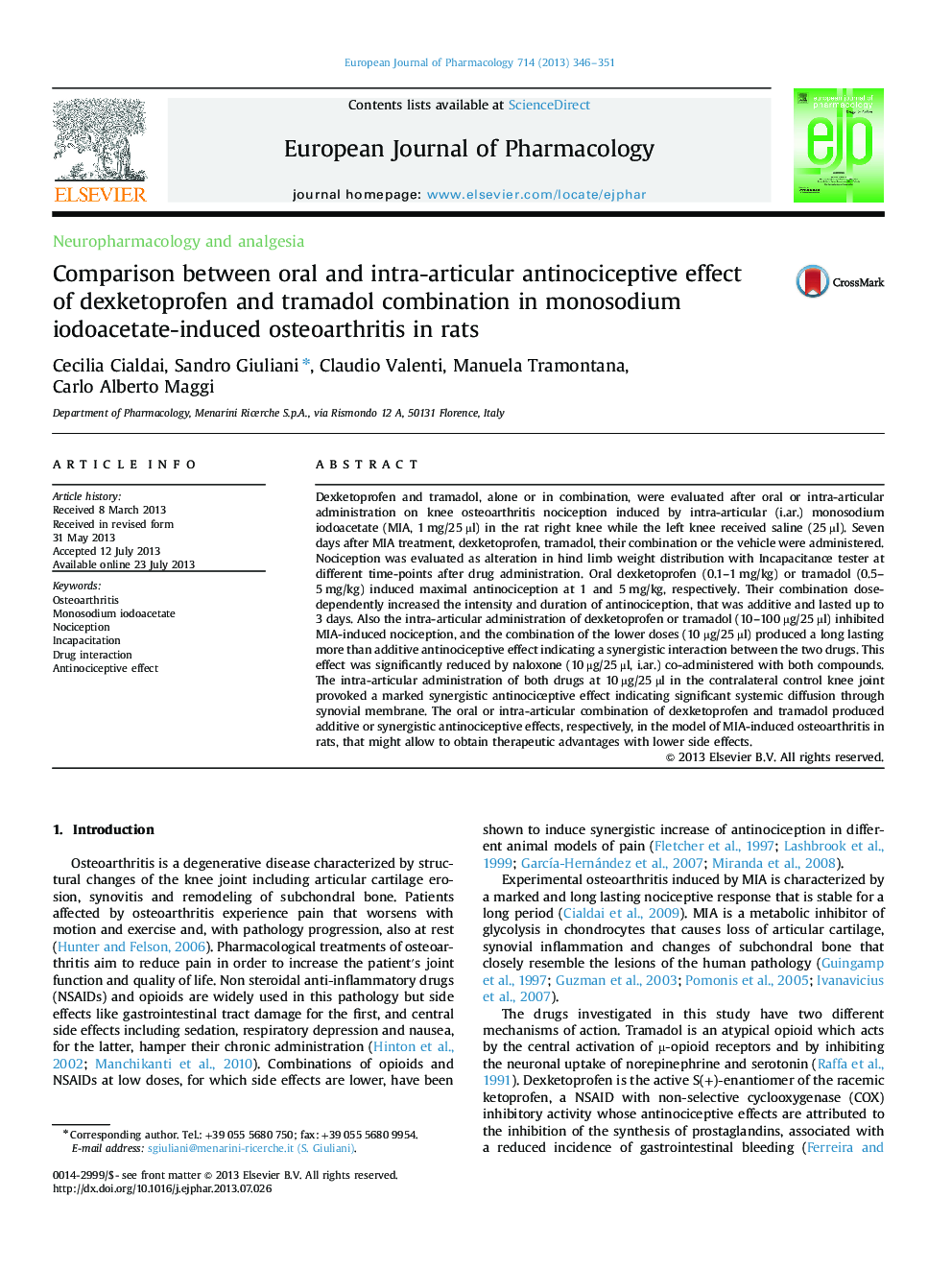| Article ID | Journal | Published Year | Pages | File Type |
|---|---|---|---|---|
| 5828553 | European Journal of Pharmacology | 2013 | 6 Pages |
Dexketoprofen and tramadol, alone or in combination, were evaluated after oral or intra-articular administration on knee osteoarthritis nociception induced by intra-articular (i.ar.) monosodium iodoacetate (MIA, 1 mg/25 µl) in the rat right knee while the left knee received saline (25 µl). Seven days after MIA treatment, dexketoprofen, tramadol, their combination or the vehicle were administered. Nociception was evaluated as alteration in hind limb weight distribution with Incapacitance tester at different time-points after drug administration. Oral dexketoprofen (0.1-1 mg/kg) or tramadol (0.5-5 mg/kg) induced maximal antinociception at 1 and 5 mg/kg, respectively. Their combination dose-dependently increased the intensity and duration of antinociception, that was additive and lasted up to 3 days. Also the intra-articular administration of dexketoprofen or tramadol (10-100 µg/25 µl) inhibited MIA-induced nociception, and the combination of the lower doses (10 µg/25 µl) produced a long lasting more than additive antinociceptive effect indicating a synergistic interaction between the two drugs. This effect was significantly reduced by naloxone (10 μg/25 μl, i.ar.) co-administered with both compounds. The intra-articular administration of both drugs at 10 µg/25 µl in the contralateral control knee joint provoked a marked synergistic antinociceptive effect indicating significant systemic diffusion through synovial membrane. The oral or intra-articular combination of dexketoprofen and tramadol produced additive or synergistic antinociceptive effects, respectively, in the model of MIA-induced osteoarthritis in rats, that might allow to obtain therapeutic advantages with lower side effects.
